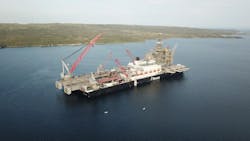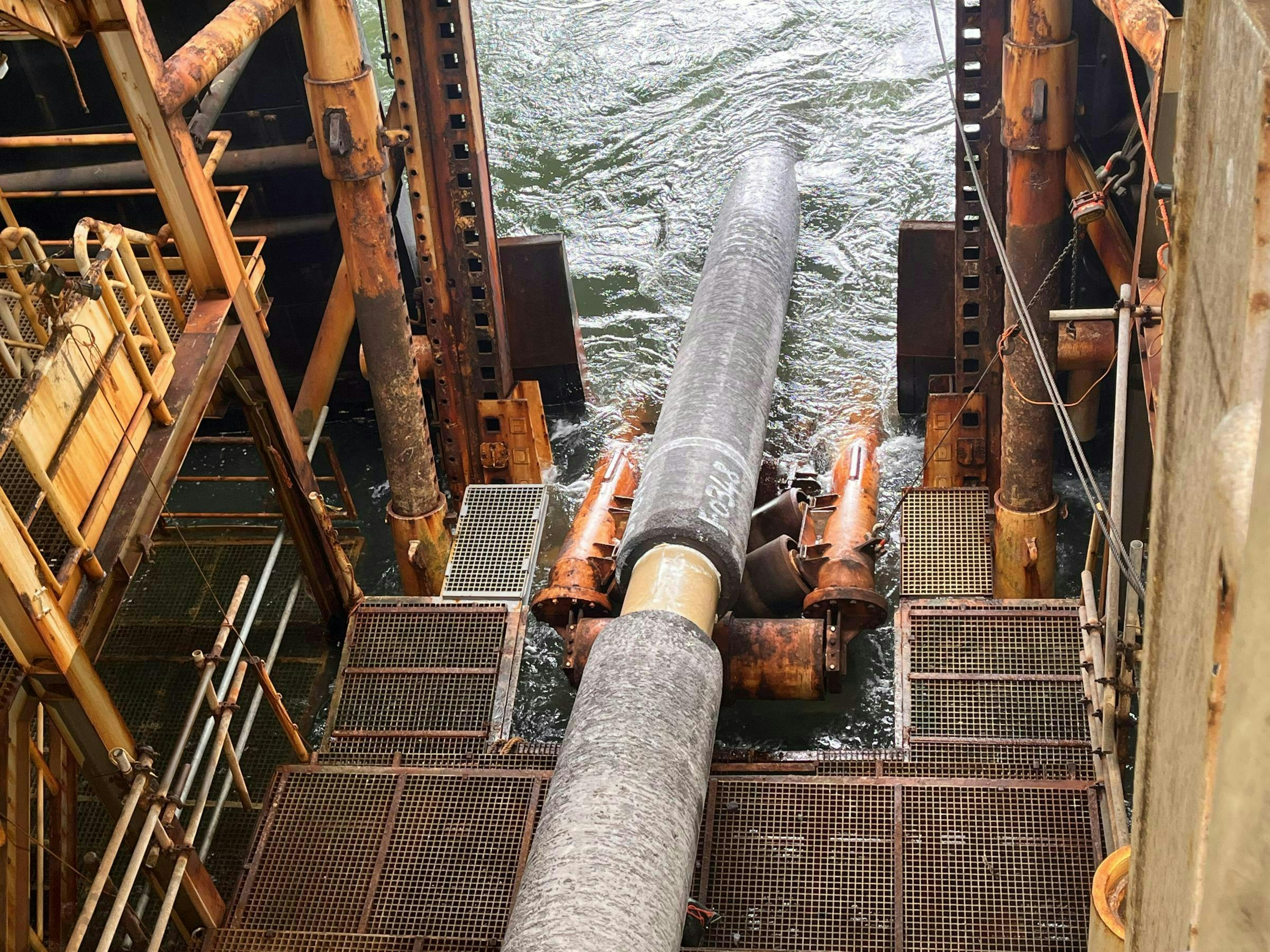Allseas vessel sets down West White Rose topsides offshore eastern Canada
Allseas’ Pioneering Spirit heavy-lift vessel has installed the 23,000-metric ton topsides for Cenovus Energy’s West White Rose development offshore Newfoundland and Labrador, according to a July 18 company news release.
The single-lift operation, completed last week, was the vessel’s first topsides installation onto a concrete gravity structure and its first big heavy-lift assignment outside northwest Europe.
The topsides, comprising drilling facilities, a flare boom and living quarters for 144 people, was connected to the 210,000-mt concrete base at the Grand Banks Field location. It had arrived a few weeks earlier at the Bull Arm transfer location following a 5,500-km voyage from the fabrication yard in Ingleside, Texas.
Collecting the structure had involved the first direct topsides transfer to Pioneering Spirit using a self-propelled vessel.
Elsewhere, Allseas’ Lorelay has resumed pipelay operations for the Porthos carbon capture and storage project in the Dutch North Sea. Work had been suspended on May 7 due to an issue with the vessel’s tensioning equipment.
Lorelay returned to port for inspection, repair and full system testing. Following all systems clearance, the vessel was able to restart installation on July 11 of the 20-km offshore pipeline, which will take CO2 from the Rotterdam industrial hub to storage reservoirs under the North Sea.
During the suspension period, other offshore activities continued with Lorelay itself supporting installation of the riser and clamp systems at the P18-A platform, where the delivered CO2 will be injected into depleted gas fields.
Once pipelay is complete, the line will be trenched and buried along the entire route for stability and protection.
Last month, another Allseas vessel, Solitaire, finished a pipelay program for the Aker BP-operated Yggdrasil multi-field development in the Norwegian North Sea, laying 122 km of oil and gas export pipelines.
The vessel performed the full offshore work scope from touchdown monitoring to tight snake curves, installing an in-line tee and more than 86,000 metric tons of steel and concrete pipes on the seabed, with logistical support from Allseas’ Oceanic vessel.
About the Author
Jeremy Beckman
Editor, Europe
Jeremy Beckman has been Editor Europe, Offshore since 1992. Prior to joining Offshore he was a freelance journalist for eight years, working for a variety of electronics, computing and scientific journals in the UK. He regularly writes news columns on trends and events both in the NW Europe offshore region and globally. He also writes features on developments and technology in exploration and production.


